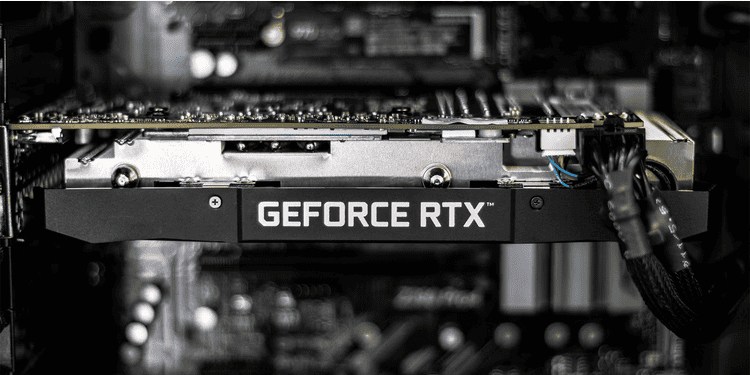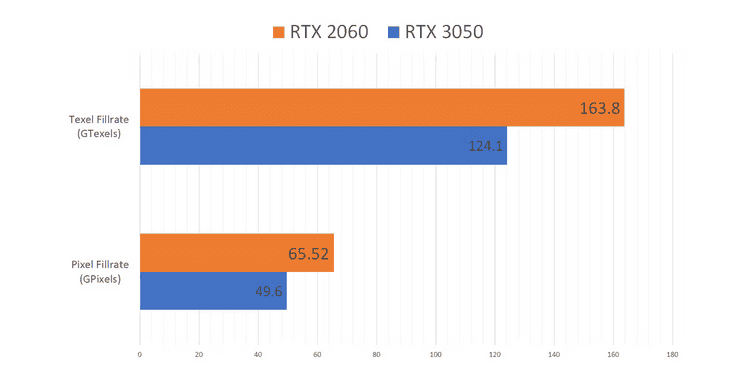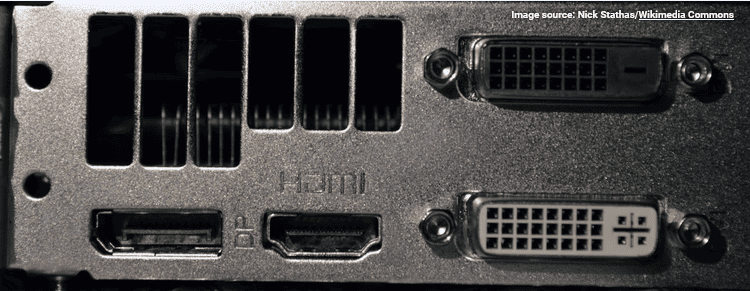When NVIDIA unveiled the RTX 3050, many people were ecstatic since the firm was launching a more cheap, entry-level card to help budget players.
However, when the specifications were released, many people stated that having the previous generation RTX 2060 was preferable. The results were self-evident when the card was removed, and testers got their hands on it.
So, here are 5 reasons why you should save money and go with the last-generation RTX 2060.
Specifications
Before delving deeper, consider the numbers on each card. These are the specifications for both cards, gathered from NVIDIA and TechPowerUp data.
| GeForce RTX 3050 | GeForce RTX 2060 | |
| NVIDIA CUDA Cores | 2,560 | 1,920 |
| Base Clock (GHz) | 1.55 | 1.37 |
| Boost Clock (GHz) | 1.78 | 1.68 |
| VRAM | 8GB GDDR6 | 6GB GDDR6 |
| Memory Interface Width | 128-bit | 192-bit |
| Tensor Cores | 80 | 240 |
| Ray Tracing Cores | 20 | 30 |
| L2 Cache | 2MB | 3MB |
| Slots | 1x HDMI 2.1, 2x DisplayPort 1.4a | 1x DVI, 1x HDMI 2.0, 2x DisplayPort 1.4a, 1x USB Type-C |
| SRP | $249 | $300 |
1. Raw Power
According to the specifications, the RTX 3050 has a faster base and boost clock speed, clocking in at 1,545 MHz and 1,780 MHz, respectively. On the other hand, the RTX 2060 only has a base clock speed of 1,365 MHz and a boosted performance of 1,680 MHz.
Despite this, the latter still outperforms the former regarding processing power, as measured in TFLOPS. With only 6GB of RAM, the base model RTX 2060 can process 10.483 TFLOPS in half-precision format. When the values are boosted, they reach 12.902 TFLOPS. It also has a ray tracing performance of 25.2 TFLOPS.
The RTX 3050, on the other hand, can only accomplish 7.946 TFLOPS in half-precision mode and 9.098 TFLOPS when boosted. It also has a ray tracing performance of only 18.2 TFLOPS. The RTX 2060 has 32% more processing power than the RTX 3050. This performance disparity grows to 42% when boosted.
The RTX 2060 also offers 38% greater ray tracing capability, making it more capable despite having fewer RAM and CUDA Cores.
2. Theoretical Performance
The theoretical performance of a graphics card is measured by the pixel and texel fill rate. This metric counts the number of pixels or texture map elements (texels) the card can render and write to memory in one second.
The RTX 2060 boasts 65.52 GPixels and 163.8 GTexels, while the RTX 3050 has only 49.6 GPixels and 124.1 GTexels. This means the RTX 2060 is substantially faster than the 3050 at rendering scenes and textures.
Despite having more VRAM, the RTX 2060’s wider bus width also performs better than the RTX 3050. In addition, the older memory has 336 GB/s of memory bandwidth, while the newer one only has 224 GB/s. This results in quicker read/write rates, allowing the video card to handle more data faster.
3. Actual FPS Output
Despite the Nvidia RTX 2060’s higher theoretical output, the higher numbers will only be meaningful if the graphics card can translate them into actual frames. However, as the previous result shows, the older video card still outperforms the new one.
Several benchmark results show that the RTX 2060 routinely outperforms the competition in various tests. It returns 114 fps in lighting tests, 117 fps in reflection tests, 134 fps in rendering tests, and 101 fps in particle system testing, for example.
The RTX 3050 only managed 103 fps, 86.6 fps, 84.5 fps, and 73.4 fps. That’s an average 35% improvement in performance over the most recent entry-level offering for the last-generation video card. And when both cards are overclocked, the disparity grows to 41%.
We also looked at some FPS results from real-world games, as tested by TechSpot.
| Title | Resolution, Settings | Nvidia RTX 3050 (FPS) | Nvidia RTX 2060 (FPS) |
|---|---|---|---|
| Assasin’s Creed Valhalla | 1080p, Medium | 79 | 86 |
| 1440p, Medium | 58 | 67 | |
| Shadow of the Tomb Raider | 1080p, Highest | 87 | 99 |
| 1440p, Highest | 57 | 65 | |
| Watch Dogs: Legion | 1080p, Medium | 88 | 104 |
| 1440p, Medium | 64 | 75 | |
| Tom Clancy’s Rainbow Six Siege | 1080p, Ultra | 225 | 252 |
| 1440p, Ultra | 141 | 162 | |
| F1 2021 | 1080p, High | 141 | 169 |
| 1440p, High | 98 | 117 | |
| Horizon Zero Dawn | 1080p, Favor | 82 | 93 |
| 1440p, Favor | 56 | 66 | |
| Far Cry 6 | 1080p, Medium | 96 | 102 |
| 1440p, Medium | 68 | 75 | |
| DOOM Eternal | 1080p, Ultra | 178 | 177 |
| 1440p, Ultra | 130 | 115 | |
| Resident Evil Village | 1080p, Balanced | 114 | 136 |
| 1440p, Balanced | 78 | 94 | |
| Death Stranding | 1080p, Default | 108 | 115 |
| 1440p, Default | 79 | 89 | |
| Hitman 3 | 1080p, Medium | 112 | 116 |
| 1440p, Medium | 74 | 68 | |
| Cyberpunk 2077 | 1080p, Medium | 66 | 80 |
| 1440p, Medium | 41 | 51 |
With these results, the RTX 2060 routinely outperforms the RTX 3050, save for one title—the RTX 3050 averages 115 frames per second at 1080p and 79 frames per second at 1440p. 2060, on the other side, averages 127 FPS in 1080p and 87 FPS in 1440p gaming.
In other words, whether you’re gaming at 1080p or 1440p, the older card has a 10% performance edge over the newer GPU.
4. Use in Crypto Mining
While the RTX 3050’s 8GB VRAM improves performance, it also works for mining. Compared to the RTX 2060, which only features 6GB VRAM, the RTX 3050 is more desired for crypto mining operations.
Miners are more likely to utilize the RTX 3050 since the extra RAM can aid with the raw computational load required to mine Bitcoin. As a result, if you buy a secondhand RTX 3050, you’re more likely to come across a card used for mining. Before you spend your money on a used GPU, you should check to see if it has been altered for crypto mining.
5. More Port Options
This provides more possibilities, particularly if you have an older monitor with only a DVI connector. Its USB-C port also allows you to connect to other devices besides monitors. This will enable you to add the newer standard to an older PC with only USB-A connections.
The RTX 2060 Outperforms the 3050, But You’ll Have to Pay the Price
While most people believe newer is better, this is only sometimes true. This is particularly true of the RTX 3050 and RTX 2060. The former is an excellent upgrade if you’re coming from a GTX 1650 or 1050. However, if you own the RTX 2060, the RTX 3050 is a step-down.
After all, in early 2023, the RTX 3050 will be Nvidia’s current-generation entry-level GPU, while the RTX 2060 will be its previous-generation mid-range offering. If you want to keep a similarly powerful video card for the current generation, opt for the RTX 3060.
If you want to jump on the ray tracing bandwagon with an RTX GPU but only have the budget for a 3050, go for a secondhand RTX 2060 with a good track record instead. Then, while you wait for the mid-range 4000-series GPUs to arrive, you’ll get more bang for your buck with this card.

















